By Gouri Satya, Sr. Journalist
Kashipathy Agrahara in K.R. Mohalla is the largest Agrahara built in Mysuru. While the Agraharas were built by the Maharajas, their queens and others were one stretch of road with about 21 houses, Kashipathy Agrahara is spread out into a block of a few streets covering an extensive area from the Chamaraja Double Road to Nala Beedi and Renuka Temple Street.
The Agrahara is named after Kashipathy Sastry, who built it for himself, his relatives and a few Brahmin priests. It comprised 62 houses and the numbers have increased now. The houses were spacious with open places in front of each house having trees like coconut and flowering trees. The people who lived there were scholars and musicians.
Kashipathy Sastry was a learned scholar and renowned astrologer of the Palace. He also traded in diamonds, it is believed. Dealing in diamonds had made him rich. He had accumulated such huge wealth that the chains of the swing (Uyyale) in his house were of gold, it is said. His period is stated to be around 1870 when Maharaja Chamaraja Wadiyar was reigning.
Kashipathy Sastry was the son of Pinnappa Sastry and the family hailed from Kanchi. They lived at Sevilimedu village, about 5 km away from the famous temple town of Kanchipuram in Tamil Nadu. Built by the Cholas, the Lakshminarasimhaswamy Temple is believed to be around 1200 years old.
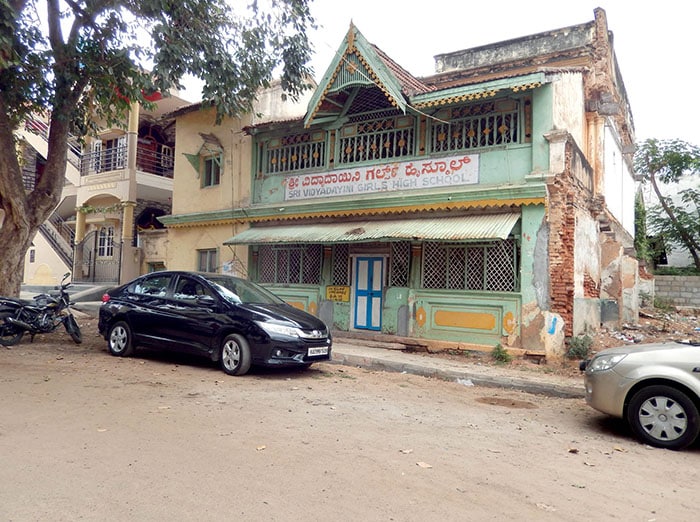
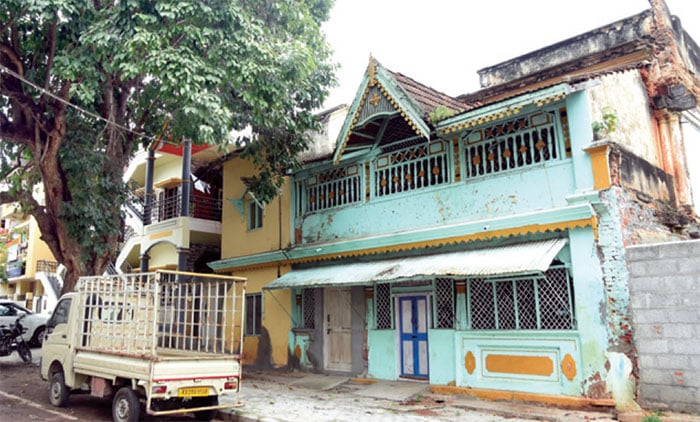
Some of his descendants visit the temple regularly to worship their home deity, Lakshminarasimha, whose name has been given to many among the descendants. Coming to know of his scholarship, the then Sringeri Swamiji suggested Maharaja Chamaraja Wadiyar to invite Kashipathy Sastry to Mysuru.
Accordingly, the Maharaja invited him to Mysuru and offered him all facilities. He provided him with one of the ten houses built near the Krishnaswamy Temple within the Palace fort. Sastry lived there enjoying the patronage of the Maharaja.
Kashipathy Sastry was the youngest among three brothers. The eldest was a Vedic scholar and the second one was a musician. Being a reputed astrologer and expert in diamonds, Kashipathy Sastry developed a close association with Chamaraja Wadiyar and became his adviser.
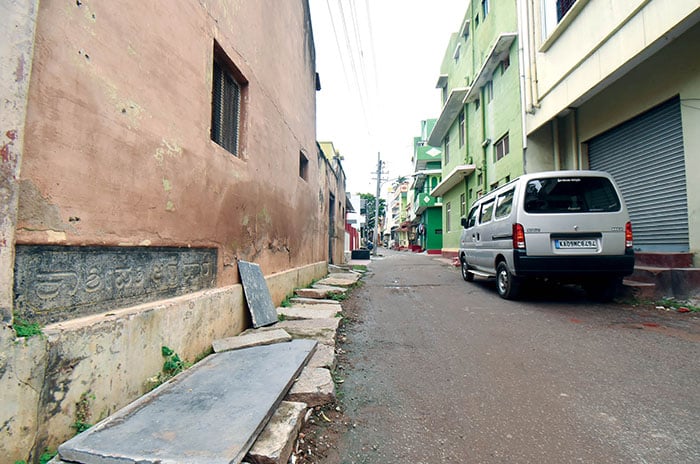
The Maharaja, it is said, used to consult Kashipathy Sastry on several issues and they were seen discussing till late hours. His association was so close he could dine with the Maharaja, a privilege that was enjoyed only by the members of the royal family. He had also the privilege of going to the Palace in his horse-driven coach.
In appreciation of his scholarship, the Maharaja had gifted Kashipathy Sastry two or three Jodi gramas (two villages) and a piece of land at the foot of Chamundi Hill. Kashipathy Sastry had also fertile irrigated lands and mango gardens.
Kashipathy Laya
When plague epidemic spread within the Palace Fort and his uncle became a victim, Kashipathy Sastry decided to move out. He bought a vast tract of land belonging to Bakshi Basappaji near the Fort, where he built a huge house that opened at one end of the present Chamaraja Double Road, earlier called Chamaraja Road, and closed at the other end of the road leading to Thyagaraja Road.
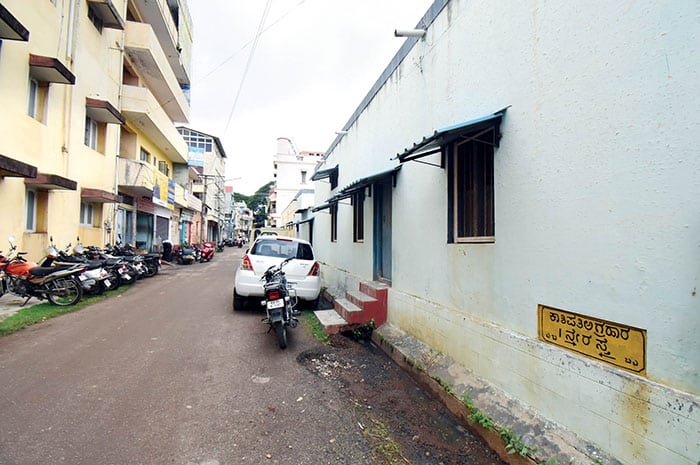
Besides his palatial house, he built a Mantapa and 62 houses, all enclosed within a wall. The houses were given to his relatives and 2-3 Telugu Brahmins who were associated with Sastry on nominal rent. It was called Kashipathy Laya.
In this Agrahara, we can see houses spread within small crossroads. The wall around them no longer exists. His descendants lived there for a long time, even after their forefather’s death. Among them was the astrologer’s eldest son, Ashwathanarayana Sastry. Even now, one or two families live there.
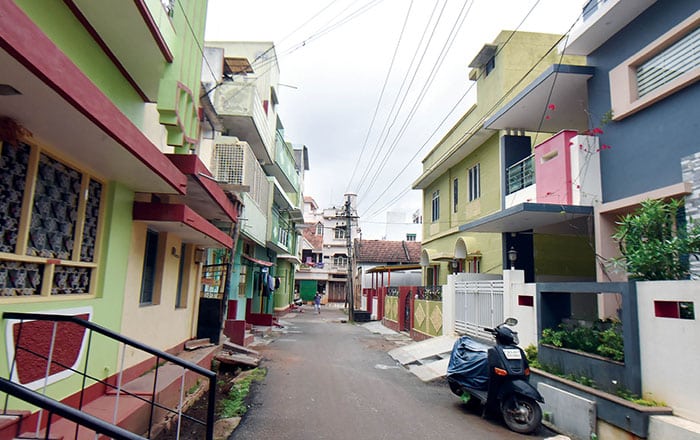
Kashipathy Sastry, it is believed, had sold a portion of the land lying vacant in his sprawling Agrahara to the relatives of Tipu Sultan. One Ali Khan had taken the land promising to give Jodi gramas (two villages) to Sastry, a promise which was not fulfilled. Even today, Muslim families live close to the Kashipathy Agrahara on Rahmania Street and around. There was also a palace, which was popularly known as ‘Tipu’s Palace’ facing the Chamaraja Double Road, a place up to which the Agrahara extended originally.
Being a rich man (Sowcar), Kashipathy Sastry was lending money to scholars who approached him at the time of their needs and many of them were prominent personalities like Kunigala Ramasastry, a highly respected scholarly person of Sastry’s period. It is said, even the Maharaja had borrowed money from Kashipathy Sastry.
Ramothsava celebrations in Mysuru way back in 1885
Kashipathy Sastry had a good collection of books, many of which related to music as music ran in the family’s blood. His brother Narasimha Sastry’s son, Sundara Sastry (1855-1935), was both an accomplished Veena Vidwan of the traditional Mysuru style and a vocalist of repute. He was the first music teacher in Maharani’s High School and also the senior Asthana Vidwan in the court of Krishnaraja Wadiyar IV. He was a great devotee of Lord Rama having received Sri Ramataraka Mantropadesha. He launched Ramothsava celebrations and music performances for the first time in Mysuru in his house on the Geetha Road in Chamarajapuram in about 1885 and conducted with religious regularity every year. Reputed musicians offered music seva during the celebrations.
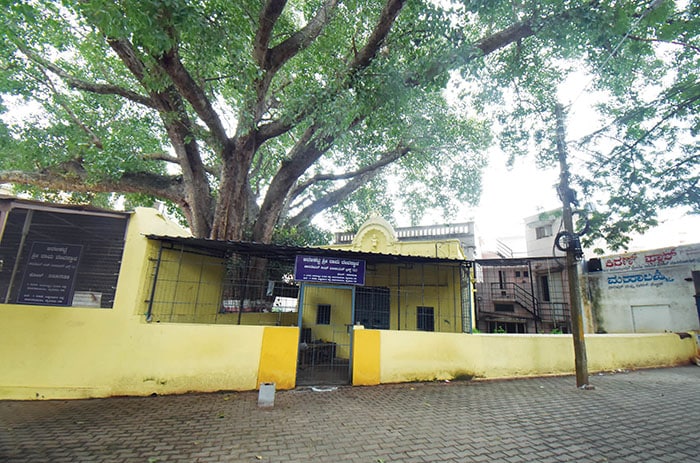
After Sundara Sastry breathed his last in 1935, the tradition of organising Ramothsava and music performances was continued by his children and his close associate Subrahmanya Sastry. In memory of the revered musician, who was also a Vaggeyakara, the Sundara Rama Mandira, now called Aralikatte Rama Mandira, adjacent to which stands a ‘Peepul’ tree, in Chamarajapuram, was built and Ramothsava music performances were conducted every year till recently in its premises.
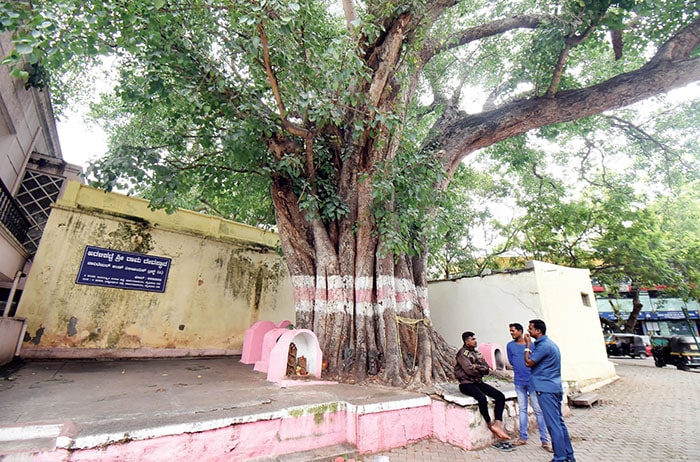
Sundara Sastry led a saintly life like Saint Tyagaraja, singing songs in praise of Lord Rama, including his compositions in Kannada, Sanskrit and Telugu numbering over 40. His descendant, Karthik Lakshminarayana, who is also a musician, is making efforts to trace the compositions composed by Sundara Sastry.
Like Sundara Sastry’s compositions, it is not known what happened to the wealth Kashipathy Sastry had accumulated. Only one or two small heirlooms, like a silver Ganesha figure and a Sri Chakra Yantra, are with his descendants, who worship it daily.
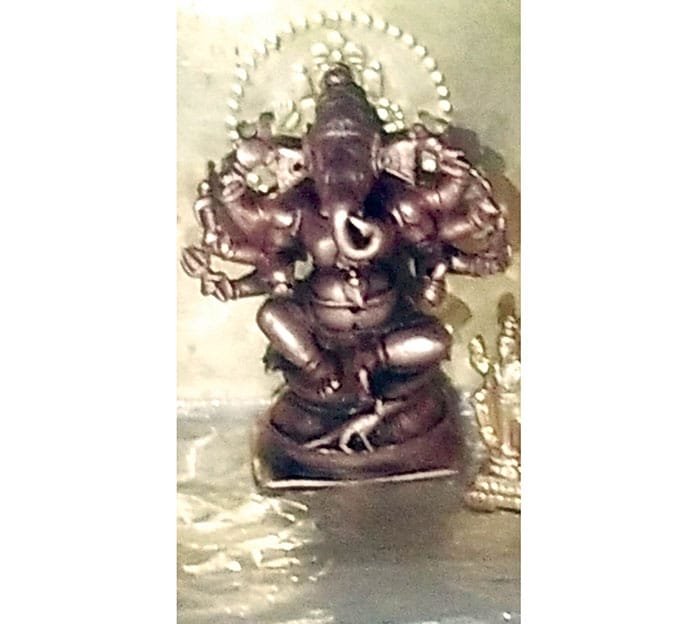
An inscription at Vijayapura
There is mention of a Kashipathy Sastry in an inscription belonging to the 19th century. The inscription of October 13, 1855, found at Vijayapura in T. Narasipur taluk mentions one Kashipathy Subba Sastry and says he belongs to Koundinyasa Gothra of Apasthambha Sutra Yajushakadhyayi.
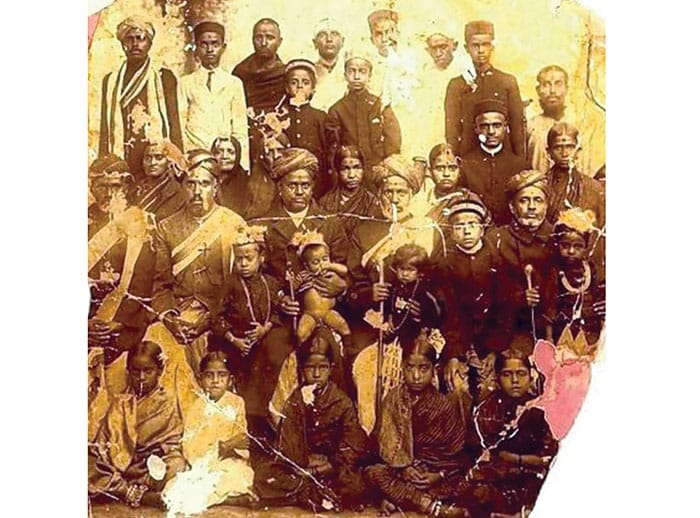
The Kannada inscription recorded in the Epigraphia Carnatica Vol. 5, Page number 549, belongs to the period of Krishnaraja Wadiyar III. It says when Krishnaraja Wadiyar was on the throne at Mahisuru Nagara and adds the name of Kashipathy Subba Sastry. It is not known whether this Subba Sastry was related to Kashipathy Sastry of the Kashipathy Agrahara fame.



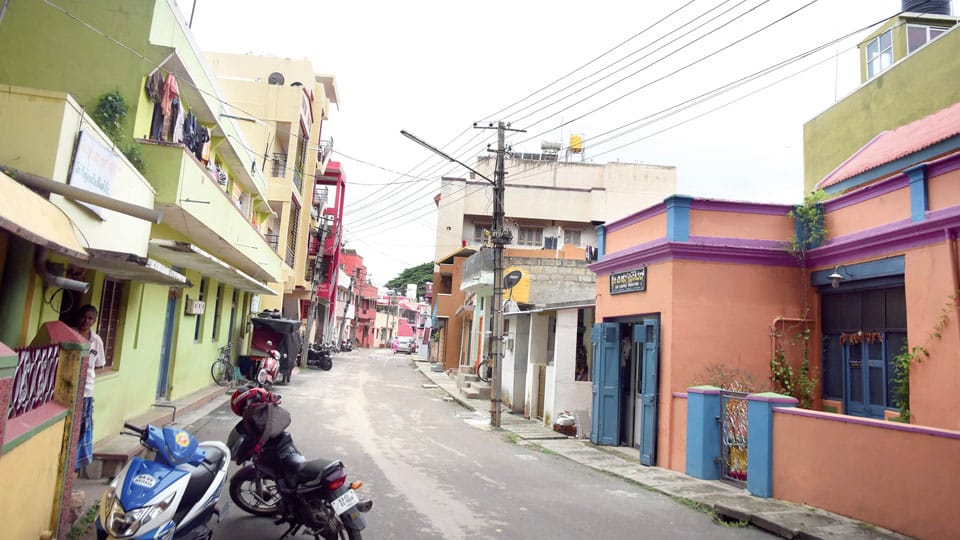




Sir,
Kudos to you Sir, for bringing this data which is important. I always go through your article and save in your folder and show for the younger generation. Many of relatives and friends appreciate me for collecting this type of history which is very good for knowledge sharing. This credit goes to you Sir. Since you are publishing the article and I save in my personal folder show this to my relatives and friends of younger generation. Sir, I request you to kindly write on article how the University came up and how the Temple in Maddur in Mandya District Vardaraj perumal Temple came up
Thanks, B SHEKAR, Mysore
Dear Satya:
Again, a very informative article from you. Please keep on writing about the old Mysore city.
Shri Kashipati Sastry is my paternal great grandfather. This is a fascinating read, thanks to Mr Gauri Satya.
There are many facts that I was not aware of of my blood ancestor. That he was a diamond merchant apart from being a scholar, a priest and an astrologer who was very close to the Maharaja of Mysore.
Hopefully one day soon, I should visit this place. 🙏
Shri Kashipati Sastry was a my paternal great grandfather. It is fascinating to learn some unknown facts about my great grandfather such as that he was a diamond merchant. I knew that he was very close to the Maharaja of Mysore and was a rich landlord and gave away most of the land as Bhoodhana. Thank you Mr Satya for this write up.
Thanks all for appreciating my article.
Really great article. After reading the article, its fascinating to know more about Mysore. Very well research and well written.
Very informative and nice article.
Request you to kindly write a similar article on amble annaiah pandit and amble subramanya iyer who were significant during the 19th and early 20th century I think.
Kudos once again.
This agrahara was a choking narrow lane with houses on either side. Those who lived there , and in other agraharas though were supposedly scholars, with spiritual bent of mind, but were often very greedy; selling diamonds, and gold-lined Uyyale etc.., do not sound like some one very distinguished as a scholar with high degree of spirituality. There were others like him in agraharas dotted around, rich and indulgent with precious stones and gold living among poor neighbours! Well, anecdotes of their charities were not verifiable with evidence.
Let us remind ourselves that many in these agraharas were poor families. I lived through those times in 1950s, as a middle school student with friends from this agrahara, and most of the school days I shared my lunch with one of them who could not afford the mid-day meal.
What was shocking , was the use of opium- in the form of paste used with betel leaves and tobacco a habit that was found among some of so called scholars living in these agraharas. I can explain in detail, incidences involving those scholars if any one wanted.
Selling, part of his property to a relative of Tipu Sulan? Beat that for any other sensation in those days!
Mysore of those days was referred to in terms of Wadiyars munificence, rich tradition etc.., but please remember, that there was large negative aspects of poverty, hunger and human right violations by the rich against the poor.
Astrology, in the form of horoscope matching was the instrument used to reject the potential brides, if the parents did not want them fearing poor dowry expectations! Frustrations of not marrying the girls as a life partner, thanks to horoscope mismatch( what nonsense it was!) led to many examples of the educated young men leaving the city and settling in North India-mostly New Delhi, which as the capital of independent India, was so welcoming. Ofcourse, the US beckoned too!
I am often disappointed with Gowri Satya’s narratives, which do not bring up the flip sides of Mysore of those days at the same time.
Mysore Wadiyars, particularly JC Wadiyar was addicted to astrology, asking his Palace astrologer-a high school Kannada teacher good in star readings made it to the Palace as the Wadiyar’s astrologer, which was a lucrative occupation, as JC Wadiyar used to reward him extremely well, when summoned by him, gave him good omens reading his star positions! This astrologer had a leather brief case of very good quality where he kept all the essential-panchangas,JC Wadiyar horoscope copy etc..with a gold Rolex watch on his left wrist-thanks JC Wadiyar’s generosity in giving gifts. The Palace had telephone installed in his home paid its bills, so that this astrologer was always on call 24/7 -with his palalce -giften silver-lined turban ready beside the brief case. He was like any other Palace employees had to have this turban on his head, when he was summoned to meet his Highness! Once, he was summoned at 3:00AM, early morning through a telephone call and a Palace car. His Highness wanted to consult him about the tumble he took with is left leg stretched while visiting the bathroom! Suffice to say, his famous client was not sombre at that time!
Astrology ruined many lives. As the above poster said, it was a very convenient instrument used to reject a prospective bride, using the stars’mismtach . After all the arranged marriage practice was dominant. One of my friends’ parents the girl he was interested in using this approach. He cleverly asked me to send them the horoscope of the same girl with a different name , citing wealthy family, and that was instantly accepted. Afterall, heavenly stars work in mysterious ways as JC Wadiyar discovered!!
These agraharas? Mostly controlled by a few rich families resident there. No dissenting voices !
Mysore of those bygone days? Mix of poverty, richness, generosity, skull duggery and the Palace the big elephant in the room always!
Addictions in these agraharas among the rich who could afford? There were many! Diamonds and gold, only God knew where they were getting them from!
When I read Kennedy clan stories here in Mass , USA, I am reminded of those rich in those agraharas!
@ A R char
The alumnus of the NIE who praises of hose so called glorious of days ( family like!) of management by the governing body, which has reduced the college today, as ‘also ran’?
Were you not from one of those agraharas? You should have known how ;wonderful’ they were!! Broad-minded people, I presume?
We had similar agraharas of Nambudris and other brahmins in several Keral cities. The similarity of Mysore are telling, as Kerala had Royalty and Palace in Trivandrum. There were famous astrologers too serving the Palace of Tirunals Dynasty.
These agraharas in Kerala like Mysore the posters observe, were controlled by influential residents, who were wealthy and powerful. The British did not want to interfere, fearing mass upsurge.
I noticed the above similarities , when I was a student in Mysore in 1950s. True , extreme poverty and lop-sided wealth was the hallmark of this city of those days.
@Koppal
Do not talk about those NIE days, please! That will bring my bad memories back again at a time when this institution was fleecing students with capitation fees and failed to deliver with perennial shortages of staff, who were paid pittance.
I am also from Mysuru, In my college days we are crossing Kashipathi agrahara on the way to Yuvaraja’s College, but we thought this Agrahara is also like one of other Agrahara’s by our Maharaja. Now knowing the detail history of the Kashipathi Agrahara, we were very much surprised. My wife is brought up from Kathwadipura Agrahara near to Kashipathi Agrahara. She also very much surprised. Thanks to Sri Gowri Satya for the report. 🙏🙏🙏🙏
@Srininivasan
What aspects of this agrahara surprises you? Was it this so called scholar astrologer Kashipathi Shastry was a diamond merchant, lined his Uyyale with gold, was a money lender lending money even to Maharaja? I am not surprised, as in those days of 1950s, our parents used to narrate stories of these agraharas, concerning the rich few there, their excesses, their treatments of fellow poor neighbours in the agrahara concerned.
These agraharas were built for a purpose-to house scholars, musicians etc.. mostly brahmins, who could not afford the cost of housing as even in those days, Mysore areas were expensive to live and constructing own house was beyond the dreams of many of the above, who were not well to do.
I posted the realities of the rich who who lived in these agraharas, and their treatment of their poor unfortunate neighbours.
We forget that although Nalwadi Wadiyar’s period was a golden era of Mysore , as the capital, the rich and powerful had their own ways unconstrained and untouched by the laws of the land then.. The British were not interested in rocking this social structure, and the practices, and these rich in agraharas got away with anything they did. That was the truth.
During my college days and later when I worked for a time in Mysore, I used to attend the music concerts in Bidaram Krishnappa Mandir, managed then by Chowdaiah, who was able to invite the front ranked Carnatic musicians of those days for the Ramanavami fortnight music festival celebration. He introduced many young musicians including Veena Chitti Babau, who was gaining popularity particularly in his veena rendering of the ‘Come September” film theme! That film was a blockbuster then only because of that lilting theme.
With Chowdaiah’s help, the Aralikatte Rama Mandira, was able to get a few of those musicians to perform , the next day of their performance at Bidaram Krishnappa Mandir, at a reduced fee. But often the problem was meeting their hotel expenses sat Dasaprakash Hotel where all these musicians preferred to stay. That was the only vegetarian hotel in Mysore then with decent lodging facility. Tensions broke out many times, when the management of the Aralikatte Rama Mandira, tried to accommodate them in a cheaper local hotel. There was times, when a few of those famous musicians got very frustrated with the facility of this local hotel. They were honest and decent musicians ; a few of us , the rasikas, chipped money in to transfer them to Dasaparakash Hotel. I am surprised this Aralikatte Rama Mandirahas lasted that long.
Looking at that photograph, I can see that this Aralikatte is gone back to the bad old days of yore- a place for youth, to put it politely, with plenty of idle hours to spare!
So this Kashipathy Shastry, a scholar of eminence and an astrologer was really a money lender, a diamond merchant, and had gold to spare to decorate his living room Uyyale? Even the oil Sheikhs of Saudi Arabia, who have gold taps in their bathrooms, have a lot to learn from this so called scholar, Kashipathi Shastri! It appears from what I had heard too that these agraharas were closed communities, hiding many unsavoury activities-particularly the widescale abuse in the communities.
Whatever the ills of the current society, abuses come out open, and the guilty are known. The activities of those like Kulapathi Shastri, a member of the upper caste, under the British and Wadiyar regime, were the very reason, the societal structure is drastically changed, after independence. If there are problems in this new structure-there are many, the blame should be attributed to the excesses of the above greedy so called scholar.
It’s very informative, nice to hear our Mysuru..
Vanitha Narasimha: If you have any details about these two personalities, please share. Planning to do a write up about the Amble Subrama ya Iyer.
Thanks for appreciating my article.
Proud to be a resident of Agrahara, Thyagaraja Circle even now. Steps are to be taken to beauty Vanivilas Market, which is also called Chikka Market even today in Agrahara
@Gouri Sathya
If you are [planning a write up of those two personalities Amble Annaiah Pandit sand amble subramanya iyer padit, please could you do a critique too on them in the same artcicle.which means both positive and negative aspects of their attitudes and outlooks.
I had heard stories about them, and had met MN Jois who was closely associated in the freedom movement of those days in Mysore. Well, for a start , they detested te Dewan at that time- Sir MV, who they thought was an agent of the British-nonsensical, as Sir MV who had to manage the treasury aspects of the State-the state was NOT prosperous as many would have to believe , even under Nalwadi Wadiyar’s time, when Sir MV was the Dewan. Like the Covid-19 pandemic now, the influenza pandemic then raged uncontrollable, and like now, Sir MV with all his wisdom had to tackle is pandemic ramifications, which meant , it was not possible for him to meet the demands of resources-manly money, activists like Amble Annaiah Pandit. Many of us can understand now, after experiencing the Covid 19 devastation, how even rich Western countries are struggling with huge debts, as a result of extreme costs involved in tacking such epidemic. The societal as well as financial fall outs from that Influenza epidemic , was I presume as bad as now, when Annaiah Pandit was ranting accusing Sir MV at that time. It was purely born out of prejudices of a crowd consisting of him , MN Jois and others looking at Sir MV as a face of the British Raj-something far from the truth.
The about crowd of freedom fighters from Mysore, got their payback with MN Jois enjoying his positions after independence. I had met him along with my relatives once, and was not impressed by his attitude. I can well imagine how Amble Annaiah Pandit would like. I contrasted this with a meeting with Kamaraj,then the CM of Tamil Nadu-when my cousin who shared his prison cell with Kamaraj for years in during Gandhiji Quit India movement, took me with him. Kamaraj was very polite, very simple and asked me about my parents, and my middle school education in Mysore. That meeting lasted for 45 minutes! Kamaraj never resented any British official responsible for his incarceration for years
The young men from the small villages of Agara and Amble in Yelandur Taluk, moved to Mysore, and for a long time formed their own cabal. Well , not surprising that they did not like Sir MV, an administrator who did not like their illusionary demands .
Finally, the proof that Mysore then was not that prosperous was the proof that many free boarding and logging hostels were dotted around Mysore, which poor students from villages could use.
@SREEKANTA SWAMY K G
You are referring to the area of the Old Anekaroti Area-now JSS college area, which was called Old Agrahara in those days-without the kind of Agrahara set up o described in the above article. The only agrahara of the above article type was up near the Palace called Devirammanni Agrahara
This Agrahara was also a closed community, with social problems of the type mentioned by posters.